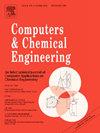基于厌氧消化的生物精炼厂在木薯价值链中实现废水增值的方法
IF 3.9
2区 工程技术
Q2 COMPUTER SCIENCE, INTERDISCIPLINARY APPLICATIONS
引用次数: 0
摘要
木薯价值链对发展中国家的粮食安全至关重要。木薯农工加工过程中产生的主要废渣是废水。厌氧消化(AD)是一种有效的处理方法,改性AD (MAD)可以产生挥发性脂肪酸(VFAs)等有价值的中间体。虽然有几项研究探索了循环经济背景下木薯废物的价值,但有限的工作将实验结果与木薯VC内综合ad生物精炼厂的技术经济和环境评估相结合。本研究评估了将ad基生物精炼厂纳入木薯VC的可行性和环境影响。利用传统AD (CAD)和MAD的实验结果对多种集成场景进行模拟和评估。以木薯淀粉生产为基础,对生物精炼厂进行了经济性和环保性评价。在常规AD (CAD)和MAD中,沼气产量和混合VFAs浓度分别为5.57 ml/ml WW和42.18 mg/ml WW。醋酸是最具代表性的VFAs。基础案例的投资回收期(PBP)为10年。CAD集成可以通过回收未消耗的混合vfa来提高经济性能。MAD整合使PBP减少了18%。木薯VC的碳足迹为2.63千克CO₂,每千克WW耗水量为11.20立方米。然而,通过整合基于ad的生物精炼厂,减少了54.4%。这些结果阐明了基于mad的生物精炼厂的潜力,显示出良好的经济效益,同时减少了对环境的影响。本文章由计算机程序翻译,如有差异,请以英文原文为准。
An approach to wastewater valorization in the cassava value chain through biorefineries based on anaerobic digestion
The cassava value chain (VC) is essential for food security in developing countries. During cassava agro-industrial processing, wastewater (WW) is the main residue generated. Anaerobic digestion (AD) is an effective treatment for this WW, and modified AD (MAD) can produce valuable intermediates such as volatile fatty acids (VFAs). Although several studies have explored the valorization of cassava waste in the context of the circular economy, limited work has combined experimental results with techno-economic and environmental assessments of integrated AD-based biorefineries within the cassava VC. This study evaluates the feasibility and environmental impacts of incorporating AD-based biorefineries into the cassava VC. Experimental results from conventional AD (CAD) and MAD were used to simulate and assess multiple integration scenarios. Biorefineries were evaluated economically and environmentally, using cassava starch production as the base case. A biogas yield and mixed VFAs concentration of 5.57 ml/ml WW and 42.18 mg/ml WW was evidenced in the conventional AD (CAD) and MAD, respectively. Acetic acid was the most representative VFAs. The base case presented a payback period (PBP) of 10 years. CAD integration enhances economic performance by enabling the recovery of unconsumed mixed VFAs. MAD integration allowed a reduction of 18 % of the PBP. The cassava VC was found to have a carbon footprint of 2.63 kg CO₂ and a water depletion of 11.20 m³ per kilogram of WW. However, a 54.4 % reduction was achieved by integrating AD-based biorefineries. These results elucidate the potential of MAD-based biorefineries, showing favorable economic results, while environmental impact is reduced.
求助全文
通过发布文献求助,成功后即可免费获取论文全文。
去求助
来源期刊

Computers & Chemical Engineering
工程技术-工程:化工
CiteScore
8.70
自引率
14.00%
发文量
374
审稿时长
70 days
期刊介绍:
Computers & Chemical Engineering is primarily a journal of record for new developments in the application of computing and systems technology to chemical engineering problems.
 求助内容:
求助内容: 应助结果提醒方式:
应助结果提醒方式:


